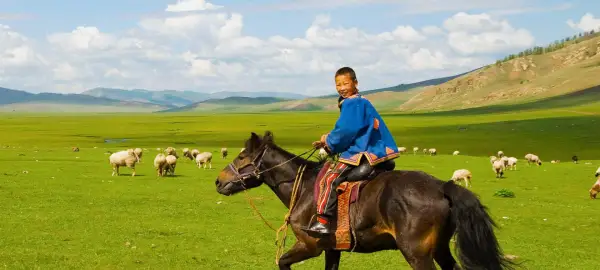Small Group Experiential Travel
Tour Code
MN1
Start
Ulaanbaatar (UBN)
End
Ulaanbaatar (UBN)
Tour type
Cultural
Max Group Size
18
When To Go
Jul
Activity Level
2 - Moderate
Overnight in
Ulaanbaatar, Dalandzadgad, Harhorin, Hustai National Park
- Overview
- Info & Inclusions
- Itinerary
- Map & Hotels
- Photos
- Dates & Prices
Highlights
- Remote, exotic, mystical Gobi Desert
- Annua Naadam Festival
- Ancient capital of Karakorum
- Traditional cooking class and evening concert
- Friendly nomadic herds people
- Sleep in a ger!
Description
This is a fantastically-varied, highlight-packed exploration of this ancient and beautiful country. All accommodation on our Mongolia tour, including all ger camps, feature comfortable amenities and en suite bath and toilet.
Price Includes
- Breakfast and dinner daily (at local restaurants and some hotels)
- Lunches are included on all full days.
- All transport, accommodation, sightseeing and entrance fees for sites noted as 'visited' in the detailed itinerary.
- Gratuities for drivers, restaurant staff, porters, local guides.
- Airport transfers for land & air customers and for early arriving/late departing land & air customers who book their extra accommodation through us.
Exclusions
- International airfare to/from the tour.
- Tour Leader gratuities, some lunches, drinks, personal items (phone, laundry, etc), domestic and international (if applicable) air taxes, visa fees, and any excursions referenced as 'optional'.
- Airport transfers for Land Only customers.
- Optional trip cancellation insurance.
- Our post-reservation trip notes offer further guidance on shopping, not included meals, and any locally paid departure taxes.
Trip Info
- Seasonality and Weather:
The best time to travel to Mongolia is from early June through the end of September, when travellers can expect an average range in temperature from 10-26 °C (50 to 80 °F); the Gobi gets hotter, up to 35 °C. Mongolia has approximately 260 cloudless days a year, hence its reputation for endless blue skies.
The rainy season extends from mid-July to August; showers are usually brief but can be heavy. You always should bring some kind of light rain gear. Because Mongolia is located far from any oceans, the humidity is generally very low.
Our annual trip coincides with the annual Naadam Festival. Please note that this event takes places in several locations throughout the country from early July every year, and the exact dates of each locations' version of the Naadam can vary from that of the main event in Ulaanbaatar. As you will see from our detailed itinerary, we choose to attend the Naadam in the Gobi, which usually has dates that vary slightly from Ulaanbaatar - so if you're doing research online, do not panic if you discover a discrepancy! - Transport and Travel Conditions:
In the capital city and surrounding areas, we use buses and minivans as required. Outside of the capital region there are few paved roads; most roads are graded dirt tracks that are often bumpy, and dusty or muddy. Flights via scheduled local carriers.
All efforts are made to ensure that vehicles are in excellent condition, though punctures and weather may cause delays and require patience. Nonetheless such overland expeditions provide the chance to experience the vast landscapes of Mongolia with the flexibility to stop and meet local families along the route.
We have numerous walking tours and visit several sites that are LARGE with steps and uneven surfaces. Porters are generally available at hotels/gers but you must be able to manage with your baggage at airports.
Due to the remote location of most of the ger camps, a general lack of resources, and transportation challenges, travellers with very specific dietary preferences may not be easily accommodated. While vegetarians and those with restrictions that are medically indicated can be catered to if we are advised in advance, we urge all travellers to be flexible and open to the excellent and hearty local fare provided at the camps.
Please note that the overall order of places visited will vary from year-to-year depending on internal air schedules and the location/dates of the Naadaam Festival we intend to experience. A slight shift of dates may be required closer to departure (ie +/- 3 months or more prior), but it is more likely that only the order of places visited will vary within the set dates.
Am I suitable for this tour? Please refer to our self-assessment form - Accommodation:
We stay in a good 5-star hotel in Ulaanbataar. At other remote locations, we use very comfortable 'ger' camp accommodation (click on 'Map & Hotels' for full details)
The camps have a maximum capacity of about 20 guests in double occupancy gers that are fully collapsible, and all feature en suite toilet and bath (some online information and reviews may reference central toilets - all of our gers are upgraded to include en suite throughout by 2017). A stove is placed in the middle of each ger and the staff will attend to it in order to provide warmth on cool nights. Towels are provided.
Soft drinks, wine and bottled water are available for purchase from the camps. The camp can be relocated leaving no more impact on the area than a herdsman family would. Solar panels and windmills generate some electricity for refrigerator and kitchen use. - Activity Level: 2
These are particularly busy tours that feature a lot of moving around, sometimes by train and short journeys on local transport. Walking tours of towns and cities are leisurely but you should be prepared to be on your feet for several hours. Some of our cultural trips that occur at high altitude and/or require greater independence with baggage handling (at hotels, airports, train stations) also fall into this category.
To learn more about the Activity levels, please visit our tour styles page. - Staff and Support:
Tour Leader throughout, local drivers, local guides at various locations. - Group Size:
Maximum 18 plus Tour Leader
Download Itinerary
- Day 1:Arrival in UlaanbaatarToday we arrive in Ulaanbaatar and transfer to our hotel.
Situated in the landlocked plateau of Central Asia between Russia and China, Mongolia covers a territory larger than that of Great Britain, France, Germany and Italy combined. Mongolia’s considerable size comprises a great array of untouched landscapes, and a nomadic people whose lives in many ways are unchanged from the days of Genghis Khan and the mighty Mongol Empire. Here, the nomadic herders still depend on nature for survival, and treasure their open landscape and wide steppes!
Ulaanbaatar, also Ulan Bator or simply just UB, is the capital and, with a population of around 1,450,000, also the largest city in Mongolia. In fact, according to recent estimates, this means approximately 45% of the country lives here. Ulaanbaatar has a long history, and is only now undergoing an industrial revolution. As traditionalists, Mongolians love their capital. One part of the population lives in condominiums in the central part of the city while the majority of the population lives in what is called as ger districts. These districts, traditionally home to many of the city’s blue and white collared workers, has recently also become a home to many migrating ex-nomads who in recent years have come to the city to find work after severe winters have killed their livestock.
Overnight in Ulaanbaatar.
Included Meal(s): Dinner - Day 2:Ulaanbaatar City TouringThis morning we visit Gandan Monastery, housing a 26-meter-high gilded statue of the Buddha. The 150 resident monks make the temples lively with plenty of chanting and ceremonies, and you may have the chance to take part in the morning chants. Gandan is the seat of Buddhism in Mongolia, and most of the temples and monasteries, along with their belongings, were destroyed during the Stalinist purges of the late 1930s.
Gandantegchinlen Khiid survived because the communists kept it as a showcase to impress foreigners. Roughly meaning 'the great place of complete joy', Gandan is one of Ulanbataar's most amazing sights. Within it are several glorious temples adorned with gold and jewels.
Here we visit the National Museum of Mongolia, which has a number of fascinating displays of traditional Mongolian clothing and weaponry, as well as exhibits charting the course of Genghis Khan's empire-building. The main square of Ulaanbaatar that has a statue of Genghis Khaan and Sukhbaatar – 2 national heroes of Mongolia.
We enjoy lunch at a Mongolian restaurant after which we visit the Bogd Khan’s Palace Museum and the Buddha Park.
Overnight in Ulaanbaatar.
Included Meal(s): Breakfast, Lunch and Dinner - Day 3:Ulaanbaatar - the Ancient Capital KarakorumThis morning we head to the north through the green grasslands of Central Mongolia. We will visit a nomadic family, where we will see how the nomads produce dairy products such as Airgag – the famous Mongolian fermented horse milk drink. Today, approximately half of Mongolia’s population is still roaming the vast plains living in their mobile ger camps and changing location several times a year. Nomadic life thrives in summer and just ‘survives’ during the winter. For centuries the Mongolian people have developed such qualities as strength and resilience that are essential for survival in this harsh nature. Over the past years the number of nomads has significantly decreased as many have moved to the capital city being compelled by the necessity to search for alternative means of subsistence.
We will reach Kharkhorin village in the early evening.
Ovrnight in Kharkhorin.
Included Meal(s): Breakfast, Lunch and Dinner - Day 4:Karakorum TouringLocated in Outer Mongolia, Karakorum is a small settlement with a glorious past. The site of Karakorum may have been first settled about 750. In 1220 Genghis Khan, the great Mongol conqueror, established his headquarters there and used it as a base for his invasion of China. Despite its relatively small size, Karakorum was one of the most important cities in the history of the Silk Road. Although founded by Genghis Khan in 1220, Karakorum's development as capital of the Mongol Empire occurred in the 1230s under his son Ögedei.
Today we will visit the legendary monastery of Erdene Zuu. Founded in 1586, this was the first Buddhist monastery in Central Mongolia. In the afternoon we will visit the newly established Museum of Karakorum which provides a great introduction to Central Mongolia, its’ history and the UNESCO world heritage site in the Orkhon River Valley.
This evening you will have the chance to watch and learn how the famous Mongolian dish, “khorkhog” is made.
Overnight in Kharkhorin.
Included Meal(s): Breakfast, Lunch and Dinner - Day 5:Karakorum - Mongol Nomadic Heritage Camp (Via Hustai National Park)This morning we travel towards the Hustai National Park with lunch at a Ger Camp along the way.
Along our route to the National Park we will stop at the Elsen Tasarkhai -- a picturesque combination of rocky mountains, green grasslands, pretty lakes and sand dunes. The Mongolian Government declared Hustai National Park as a Specially Protected Area in 1993 after the reintroduction of the Przewalski's horse (Dzungarian horse), a rare and endangered subspecies of wild horse. The park covers over 50 hectares of land and is home to many species of plants, lichens, moss and mushrooms. 44 species of mammals have been recorded here, including Mongolian gazelle, wild sheep, Ibex, Mongolian marmots and the Eurasian badger. Over 215 species of birds have been recorded in the park. In 2002 the National Park was designated as a UNESCO protected biosphere reserve.
We will visit the National Park Information Centre where we watch a documentary about the park and the Takhi wild horses. We also hope to have the chance to witness these beautiful wild horses and other wildlife in the wilderness, and we will enjoy a light hike in the surrounding area.
Overnight at Hustai National Park.
Included Meal(s): Breakfast, Lunch and Dinner - Day 6:Terelj National ParkThis morning we drive to the beautiful Terelj National Park. Along our route we will make a stop at the giant Genghis Statue – the newest landmark of Mongolia. To Mongolians Genghis Khan is a national hero, a larger-than-life figure and the symbol of Mongolian culture, and for good reasons. Genghis Khan founded the Mongol Empire, which became the largest contiguous empire in history, revived the Silk Road, united warring tribes and cemented the position of Mongols on the world’s map. In 2008, a gigantic statue of Genghis Khan riding on horseback was erected on the bank of the Tuul River at Tsonjin Boldog, 54 km east of the Mongolian capital where, according to legend, he found a golden whip. The statue is 40 meters tall and wrapped in 250 tons of gleaming stainless steel.
The Terelj National Park is the third largest protected area in Mongolia, and one of the most beautiful places in the country. Today we will enjoy lunch at a Ger Camp in the Terelj, and then take part in a traditional Mongolian archery session with an archer or two. Afterwards we will visit the Turtle Rock and the Temple of Meditation, and enjoy some light walking/hiking in the wilderness.
Overnight at Terelj Lodge.
Included Meal(s): Breakfast, Lunch and Dinner - Day 7:Terelj - Ulaanbaatar TouringThis morning we will transfer back to Ulaanbaatar and begin our day with a visit to the newly-opened Genghis Khan Museum. Afterwards, we will enjoy some lunch at a local restaurant and then continue onto the Fine Art Museum. Late this afternoon we will transfer back to the hotel and enjoy some leisure time.
Overnight in Ulaanbaatar.
Included Meal(s): Breakfast, Lunch and Dinner - Day 8:Flight to the Gobi Desert - Yoliin Am Gorge & Khavtsgait PetroglyphsAfter breakfast, we depart for our flight to the Gobi Desert. The Gobi, one of the world's great deserts, covers much of the southern part of Mongolia. Unlike the Sahara there are just a few sand dunes in the Gobi. Here you find large barren expenses of gravel plains and rocky outcrops. Many visitors regard the Gobi as a remote, exotic and mystical place. While it is some of those things, it is also mainly grass, shrubs and rocks. Oases and sand cover only about 3% of the desert. The word Gobi refers to a shallow, wide basin.
Upon arrival we drive to the glacial Yoliin Am Gorge. Our route passes the 'Three Beauties', the final peaks of the range, and then cuts through the range itself. Eagles overhead scour the desert for prey, while below families of nomads gather for felt-making or stand in groups beside their livestock at the scattered wells.
Yolinn (Yolyn) Am was first established to conserve the birdlife of the region, but today it is more famous for its dramatic rocky cliffs and narrow, heavily shaded canyons that allow sheets of blue-veined ice to survive well into the summer. Here we will walk in the narrow gorge where we hope for some wildlife sightings.
On the way back to camp, we visit the Khavtsgait petroglyph and have a bit of a walk in the area.
Dream Gobi Camp.
Included Meal(s): Breakfast, Lunch and Dinner - Day 9:Naadam Festival in the Gobi DesertAfter breakfast, we will transfer to the local Naadam Festival venue (1hr drive) to experience a full day of the Naadam Festival. This will feature the fabled wrestling, horse racing, archery and ankle bone shooting competitions of the Mongols. The Naadam Festival is a major Mongolian holiday and a wonderful time to experience the culture and people of this amazing land. The festival has its roots in the nomad wedding assemblies and hunting extravaganzas of the Mongol Army.
Locals from near and far wear their best clothes and ride their best horses or camels to attend the festival. This is a time for music, dancing and singing. It is not all about watching sporting events, as there is plenty to see and do outside -- food, music, crafts or just watching people and culture. This is the best time to see the Mongolian people!
NOTE: It is important to note that the games do not really operate on a strict schedule, but rather on a fluid basis that sometimes seems to be made up as they go along. Your local guide will have their "ear to the ground," however, and will be able to tailor our overall Naadam experience to maximize interest, though our days here may seem a little "on-the-fly."
Dream Gobi Ger camp.
Included Meal(s): Breakfast, Lunch and Dinner - Day 10:Khongor Sand Dunes & OasisThis morning we enjoy a drive to the Khongor sand dunes -- Mongolia's largest and most beautiful sand dunes that stretch over 180km in the arid Gobi Desert. These isolated dunes are also known as the Duut Mankhan (Singing Dunes) from the sound that they make when the sand is moved by the wind or as it collapses in small avalanches.
Our drive to the dunes at Khongoriin takes us through vast desert badlands that span out into the furthest distances, where remote mountains line the horizon. Today there will be many opportunities to stop and take photographs of the landscapes and people. We will visit the sand dunes and enjoy a short camel ride (+/- 30 minutes) at a nomadic camel breeder’s family.
We later head to a ger camp near the sand dunes in order to enjoy lunch.
You will have some free time at the dunes until the early evening when we return to the Dream Gobi camp for dinner.
Dream Gobi Camp.
Included Meal(s): Breakfast, Lunch and Dinner - Day 11:Cooking Class & Bayanzag Flaming CliffsAfter breakfast we visit a nomadic family for a cooking class and lunch. We will learn to prepare 2 kinds of Mongolian dishes -- steamed meat dumplings and potato salad/noodle soup at a local family in the Gobi Desert. This opportunity allows us a unique glimpse into the home life/lifestyle of a nomadic family; the experience will provide an education about the traditional Mongolian diet as well as the local 'food culture'.
Our class lasts about 3 hours, after which we watch a documentary about the Flaming Cliffs and their importance. We then drive for about 45-minutes and visit the cliffs! This is the place where American explorer Roy Chapman Andrews found dinosaur eggs for the first time. Here we enjoy the wilderness and witness the unique natural formations. There will be plenty of time for you to wander and explore, and we will enjoy a walk in the forest.
Dream Gobi camp.
Included Meal(s): Breakfast, Lunch and Dinner - Day 12:The Gobi Museum and Flight to UlaanbaatarAfter having breakfast and some leisure time, we will visit the Gobi Museum. Then, after having some lunch we will transfer back to the airport for our late afternoon flight to Ulaanbaatar. Upon arrival, we will have our farewell dinner.
Overnight in Ulaanbaatar.
Included Meal(s): Breakfast, Lunch and Dinner - Day 13:DepartureDeparture from Ulaanbaatar.
BON VOYAGE!
Included Meal(s): Breakfast
Regions Visited: Asia and Far East
Countries Visited: Mongolia
Countries Visited: Mongolia
*The red tour trail on the map does not represent the actual travel path.
The following is a list of sample hotels at some locations included on this tour. The hotels shown here are meant to provide a general sense of the standard of hotel we usually aim for; they are not necessarily confirmed for your chosen departure.
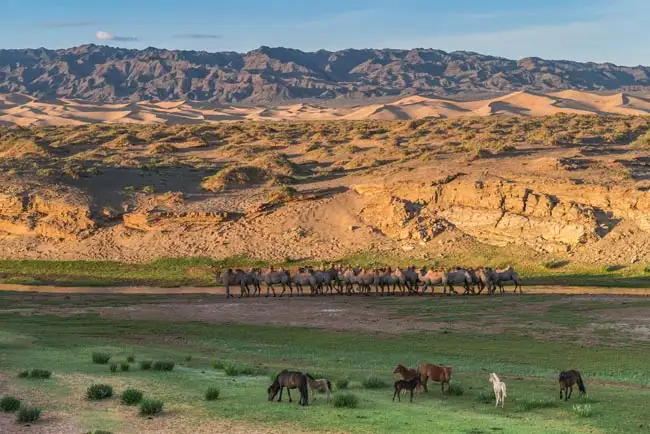
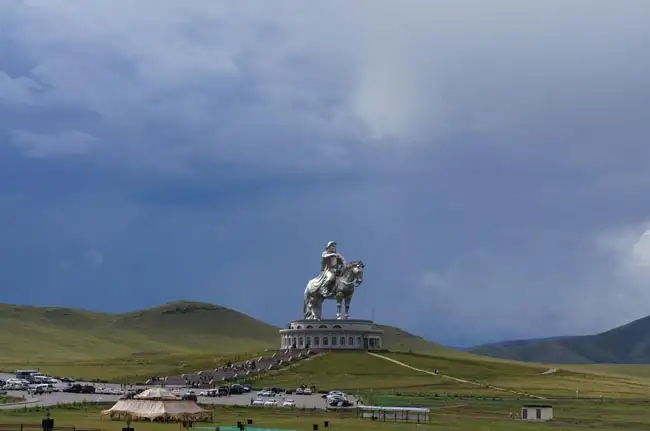
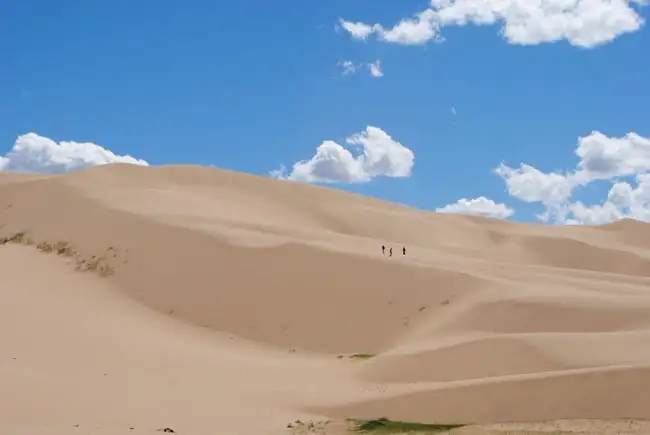
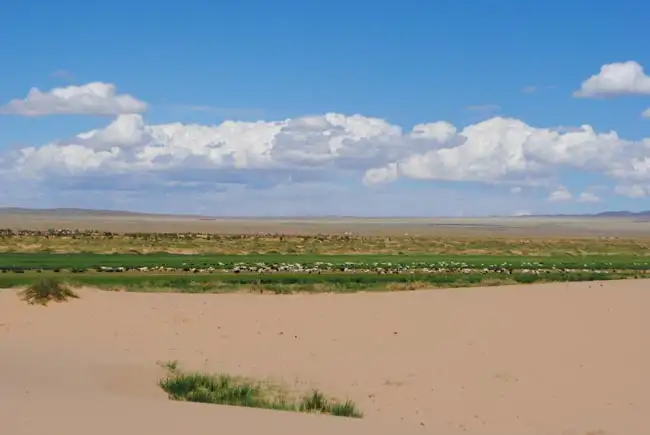
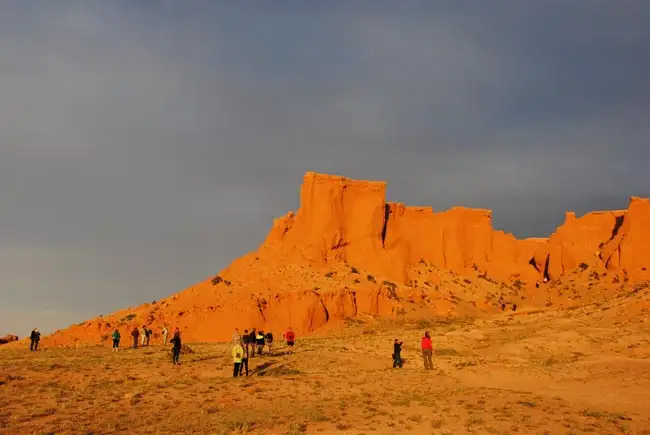
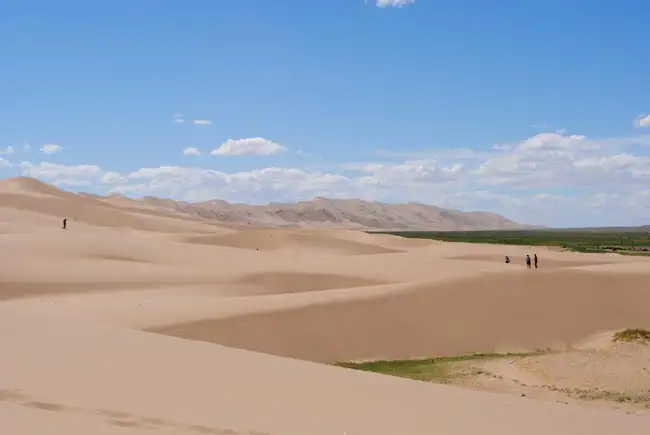
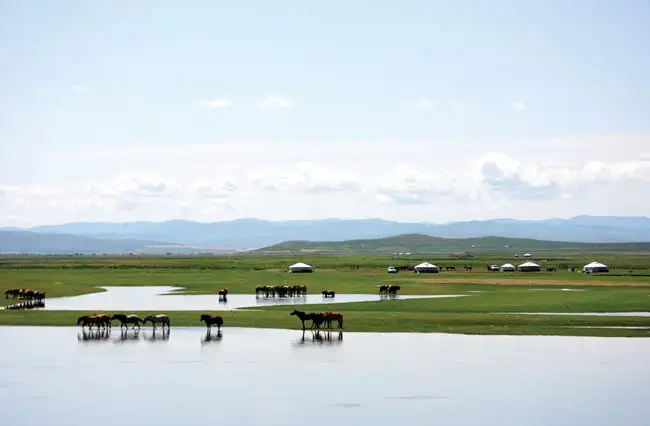








Excellent
Overall Rating
4.6
Extend Your Trip
This tour is part of a series that can be upgraded to make for a longer trip.
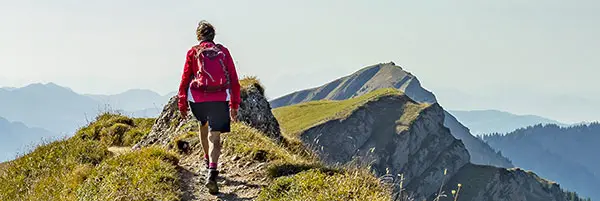
Fast and easy
Book this tour
Book your unforgettable adventure today! For any questions or advice, don't hesitate to contact us.
Have questions?
Contact Us
1-800-665-3998
- Final payment is due 90 days prior to departure.
- A non-refundable $500 USD deposit is payable at the time of booking
- Optional Single Supplement: $1070 USD (number of singles limited).
- Transferring to another tour or tour date is only permissible outside of 120 days prior to departure and is subject to a $100 USD change fee. (Read our cancellation policy for more info.)
- Due to festival dates which will be announced closer to departure, our 2026 date is TENTATIVE and could shift slightly.
Prices below are per person, twin-sharing costs in US Dollars (USD). Pricing does not include airfare to/from the tour and any applicable taxes. Get general information on flights to/from the tour.
Choose your departure date:
Frequently Asked Questions
- What is the maximum number of participants on a trip?Most of our tours carry a maximum of 18 participants; some tours (ie hiking tours) top out at 16. In the event that we do not achieve our minimum complement by our 90-day deadline, we may offer group members the option of paying a "small-group surcharge" as an alternative to cancellation. If all group members agree, we will confirm the trip at existing numbers; this surcharge is refundable in the event that we ultimately achieve our regular minimum. If the small group surcharge is not accepted, we will offer a refund of your deposit or a different trip of your choice.
- Can I extend my tour either at the beginning or end? What about stopovers?Yes, you can extend your tour either at the beginning or the end and we can book accommodation in our tour hotel. Stopovers are often permitted, depending on air routing. Stopovers usually carry a "stopover" fee levied by the airline.
- How do I make a reservation? How and when do I pay?The easiest way to make a reservation is via our website; during office hours, you are also more than welcome to contact us by telephone.
A non-refundable deposit is payable at the time of booking; if a reservation is made within 90 days, full payment is required. Some trips require a larger deposit. If international airline bookings require a non-refundable payment in order to secure space or the lowest available fare, we will require an increase in deposit equal to the cost of the ticket(s).
Early enrolment is always encouraged as group size is limited and some trips require greater preparation time.
Once we have received your deposit, we will confirm your space and send you a confirmation package containing your trip itinerary, any visa/travel permit related documents, invoice, clothing and equipment recommendations, general information on your destination(s), and forms for you to complete, sign and return to us. Your air e-tickets (if applicable), final hotel list, final trip itinerary, and instructions on how to join your tour, will be sent approximately 2-3 weeks prior to departure. - What about cancellations, refunds, and transfers?Please review our cancellation policy page for details.
- I am a single who prefers my own room. What is a single supplement?All of our tours have a single supplement for those who want to be guaranteed their own room at each location.
This supplement is a reflection of the fact that most hotels around the world do not discount the regular twin-share rate for a room by 50% for only one person occupying a room. Most hotels will give a break on the price, but usually in the range of 25-30% of the twin-share rate. This difference, multiplied by each night, amounts to the single supplement.
The conventional amount can also vary from country to country and some destinations are more expensive than others for single occupancy. In order to be "single friendly," the supplements we apply are not a profit centre for us and we do our best to keep them as reasonable as possible.
On most tours we limit the number of singles available, not to be punitive, but rather because many hotels allow for only a limited number of singles; some smaller hotels at remote locations also have a limited number of single rooms available.
Please note that most single rooms around the world are smaller than twin-share rooms and will likely have only one bed. - Do you have a shared accommodation program?Yes! If you are single traveller and are willing to share, we will do our best to pair you with a same-gender roommate. On most of our tours, if we fail to pair you, we will absorb the single supplement fee and you will default to a single room at no extra charge. At some destinations, however, where single rooms are not significantly discounted, or not at all, we may apply a "mandatory" single in the event that we cannot find you a share partner. This is usually 50% of the usual supplement, but can be as much as 100%. If applicable, this proviso will be noted on each tour page on this website, on your invoice, and in our tour date/price book (available for download under "Resources").
Please choose a departure date!
